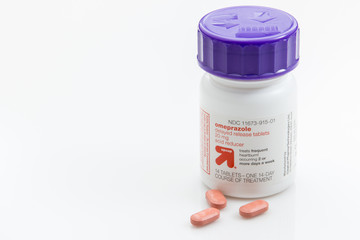
POTS: Tips for Diagnosis and Treatment
his transcript has been edited for clarity.
Michelle L. O'Donoghue, MD, MPH: Hi. This is Dr Michelle O'Donoghue, reporting for Medscape. I'm here in Amsterdam at the European Society of Cardiology (ESC) Congress 2023. Joining me for a great discussion is my friend Dr Pam Taub, who is a cardiologist and a professor of medicine at UC San Diego. She has a particular interest in postural orthostatic tachycardia syndrome (POTS), so that's what we'll be talking about today.
Thanks for joining me, Pam. When we think about POTS, for those who are not familiar with the term, what does it actually mean and how do you diagnose it?
No Tilt Table Required
Pam R. Taub, MD: As you said, it's postural orthostatic tachycardia syndrome. What that means is when somebody stands up, they have an elevation in their heart rate that is usually 30 points from when they're lying down. That's typically associated with symptoms such as lightheadedness, dizziness, and cognitive difficulties such as brain fog. The diagnosis can be made by tilt-table testing, but it can also be made in the office with simple orthostats.
In my clinic, I have people lie down for 3-5 minutes. At the end of that period, you get a heart rate and blood pressure. Then you have them stand up for 3-5 minutes and then get heart rate and blood pressure, and you look at the differences. If the heart rate goes up by 30 points — so maybe they're 80 beats/min when they're lying down and when they stand up, it goes to 110 beats/min — that's POTS, so very objective criteria. Typically, these people don't have what we call orthostatic hypotension, where there is a significant decrease in the blood pressure. It's more a heart rate issue.
O'Donoghue: How symptomatically do they usually present?
Taub: It's a spectrum. Some people have mild symptoms. After they're in the upright position for maybe 10 minutes, they get symptoms. There are some people who, when they go from a lying to standing position, they're extremely symptomatic and can't really do any activities. There are some people that are even wheelchair-bound because the symptoms are so debilitating. There's a wide spectrum.
O'Donoghue: There has been more discussion, I feel like, about the rising prevalence of POTS as a diagnosis, and in particular since the COVID pandemic. What's our understanding of the relationship between COVID and POTS and what the mechanism might be?
Taub: We've known that POTS can be triggered by a viral infection. Before COVID, we knew that in certain individuals that we think have an underlying genetic predisposition, usually some autoimmune substrate, when they get certain types of infections, whether it's influenza or mononucleosis, they get POTS.
Typically, when they get an infection, they start getting deconditioned. They don't feel well, so they're on bedrest. When they get long periods of bed rest, when they start to become active, they start to have overactivation of their sympathetic nervous system and they have a large amount of cardiovascular deconditioning. It's a cycle that is often triggered after an infection.
Article from Medscape.
------------------------------------------------------------------------------------------------
To learn more about heart disease and prevention and to earn cardiac related CE hours, Pedagogy offers the following courses:
- Broken Heart Syndrome: Clinical Manifestations, Diagnosis, and Treatment
- Cardiovascular Assessment in the Elderly
- Critical Thinking in Cardiac Assessment
- ECG Interpretation: Basic Rhythms
- EKG Recognition
- Post-Cardiac Arrest Care in the ICU
- Women and Heart Disease
Pedagogy's courses are available for purchase by the individual or facility. For individuals, register with us to create your username and password, click on the course title of interest and then click the Purchase button. For a complete listing of all our online continuing education courses, including the largest selection of infusion continuing education courses offered online, click here!
For organizations that would like to purchase education for their entire staff, email sales@pedagogyeducation.com and let us know the course(s) of interest and how many staff members you need to provide education for, and we will be happy to send you a price quote.

